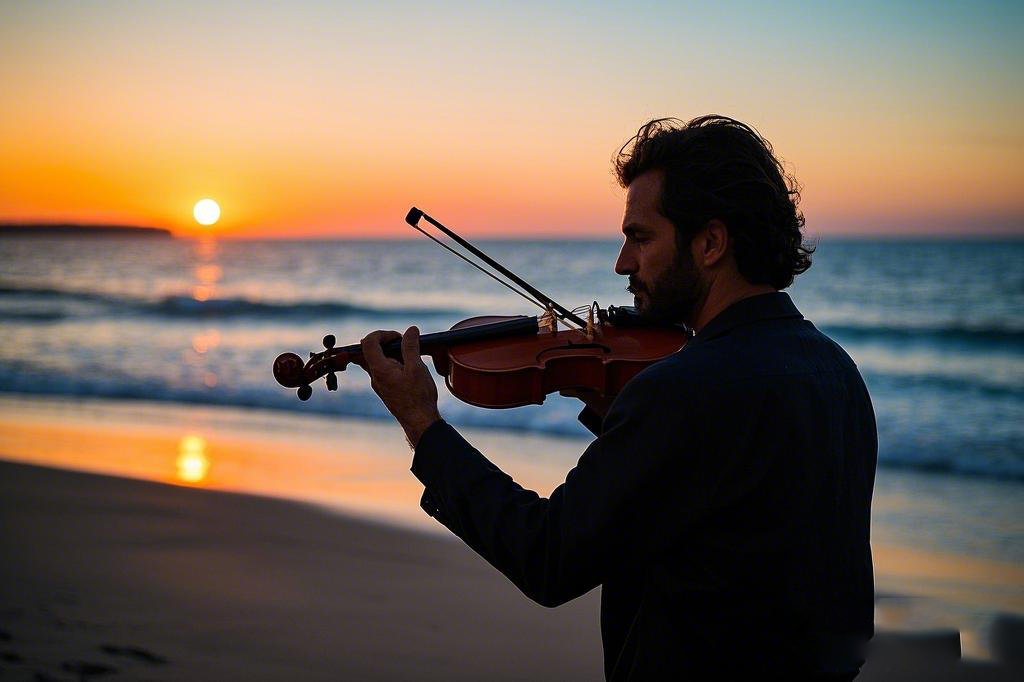Chinese Violin teachers specializing in Chinese and western music
Shang Kun 2025-02-08 286
The Importance of Violin Teachers Specializing in Chinese and Western MusicWhen it comes to learning the violin, one of the most fascinating aspects is the opportunity to explore diverse musical traditions. Violin teachers who specialize in both Chinese and Western music offer an enriching experience that merges two distinct musical worlds. With the rise of global cultural exchange, it’s becoming increasingly essential for students to find instructors who can guide them through the complexities of both Chinese and Western violin techniques. But why exactly is this combination so crucial? Is it just about learning two different styles, or does it offer something deeper, more nuanced?
Bridging Cultures with the ViolinViolin teachers who focus on both Chinese and Western music offer students the chance to bridge cultural divides. Western classical music, with its centuries-old traditions and technical precision, is deeply rooted in Europe’s musical history. On the other hand, Chinese music, with its rich textures and deeply emotional expressiveness, draws on ancient cultural values and techniques. Violinists who master both forms have a unique ability to connect with audiences from different backgrounds and expand their artistic horizons.
For students, it means they are not confined to just one set of techniques or interpretations. They can embrace a broader spectrum of music that gives them more versatility as musicians. Think of it like having a passport to explore diverse musical territories—something that, in today’s interconnected world, is incredibly valuable. But, the real question is: How does one navigate between these two distinct worlds effectively?
Challenges of Mastering Both Chinese and Western Violin TechniquesMany violinists find themselves overwhelmed by the task of mastering the violin in both Chinese and Western styles. The differences in technique, tone production, and even musical expression can be daunting for beginners and even advanced players. Chinese violin techniques, such as vibrato, bow control, and articulation, are deeply rooted in the expressiveness of traditional Chinese music, while Western music places great emphasis on tone quality, precision, and technical execution. For students, learning the differences and nuances between these two can feel like they are learning two entirely different instruments.
Moreover, Chinese violin pieces often rely on the interpretation of emotional content through subtle shifts in bowing and finger placement, whereas Western compositions might demand a more methodical, structured approach to phrasing and dynamics. Teachers who specialize in both styles help students navigate these challenges by breaking down the complex elements of each style, making it easier to transition between them. But how do teachers prepare students for these differences without overwhelming them?

The Role of Specialized Teachers in Shaping Diverse TalentA violin teacher specializing in both Chinese and Western music plays a vital role in guiding their students through the nuances of each style. Their expertise helps to ensure that students don’t just learn the technicalities of playing the violin, but also understand the cultural context behind the music. A teacher’s role goes beyond simply teaching how to play notes on a page—they help students feel the music and connect with its emotional depth.
When learning from a teacher who understands the intersection between these two traditions, students gain an appreciation for both musical cultures. A specialized teacher can incorporate techniques from each tradition into a student’s overall training, enriching their ability to adapt to various musical demands. This not only builds technical proficiency but also fosters a deep appreciation for the diversity within the world of violin music. But what makes these teachers particularly effective in fostering such a deep understanding of music?
The Advantages of Learning Both TraditionsOne might wonder, why should someone invest in learning both Chinese and Western violin techniques when the world is full of violinists who specialize in one or the other? Well, the answer lies in versatility and the ability to perform and communicate across cultural divides. A student who is equally comfortable with both traditions has access to a much wider range of repertoire, performances, and collaborations. In an increasingly globalized world, the ability to interpret and perform music from different cultural backgrounds gives musicians a distinct edge.
Additionally, mastering both traditions allows students to become better-rounded musicians. The skills learned from one style can often be applied to the other. For instance, the expressive techniques used in Chinese music can enhance a player’s emotional connection with Western pieces, and the technical precision required in Western classical music can help refine one’s performance of Chinese violin music. Students who learn both styles become masters in their craft, able to express the emotions and beauty of both musical worlds with ease.
The Future of Violin EducationLooking ahead, the demand for violin teachers specializing in both Chinese and Western music is only going to grow. As music continues to evolve and more musicians seek to expand their skills, the need for instructors who can teach both styles will increase. This trend not only allows students to enhance their musical abilities but also encourages a more interconnected, globally-minded approach to learning.
The ability to learn both Chinese and Western violin techniques opens up a wealth of opportunities for students. Whether pursuing a career in music or simply seeking personal enrichment, the advantages of learning both traditions are undeniable. And as the world continues to embrace cultural fusion, there’s no better time than now to explore the violin through both Chinese and Western lenses.
The journey of learning the violin is about more than mastering a set of technical skills—it’s about connecting with the music and sharing it with the world. By learning from a teacher who specializes in both traditions, students can unlock a new world of musical potential, developing a richer understanding of their instrument and the music they create.
